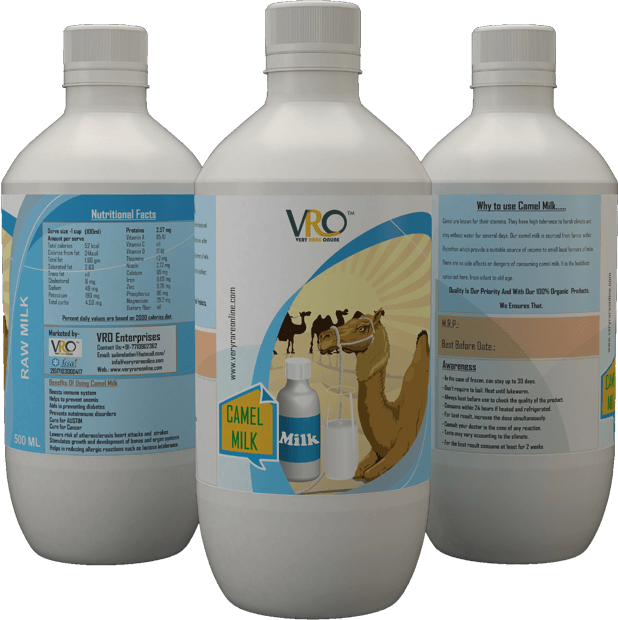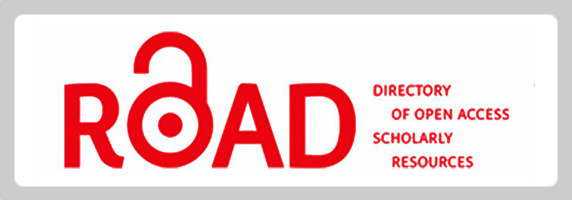Marketing and Microbial Quality of Raw Camel Milk in West Hararghe Zone Oromia, Ethiopia
Abstract
The study was conducted in the West Hararghe Zone of Oromia Regional State to assess raw camel milk marketing and to determine the microbial quality of raw camels’ milk. The research was conducted during the period of 2019-2020 using two potential districts (Mieso and Bordede). A total of 6 potential kebels were selected purposively. From each kebele 20 respondents (a total of 120 respondents) who have a lactating camel and produce milk were selected randomly from the total households. In the current study, pastoralists practice an informal marketing system where they sell their milk to neighbors or the local market. Majorities of respondents in Bordede (60%) did not sell milk but in Mieso district majority of respondents’ sales (58.33%), milk was mainly to individual household consumers. The channel of marketing is majorly direct in which milk producers sold the milk to customers directly by themselves. The mean average price per liter in the wet season was 19.92±0.282, 14.63±0.690.ETB and in dry season 24.7917±0.51, 23.3051±2.28 in Bordede and Mieso respectively. The price of camel milk varies mainly based on season, milk demand and supply around the study area. The majority of respondents in this study select the marketplace based on the price of milk per litter. Long-distance to market, high cost of transport, an insufficient amount of milk produced, and spoilage were the reasons of the producers for not selling fresh whole milk both in Bordede and Mieso district. The overall mean TBC and CC of raw camel milk samples was 5.85 ± 0.15 and 4.32±0.69 log CFU/ml, respectively. The present study showed that the quality of milk produced in the study area was poor. In general, camel milk production was practiced mostly based on traditional types and the microbiological quality of milk produced by pastoralists was poor and this calls for rigorous hygienic measures to improve microbial quality of milk. Hence, adequate sanitary measures should be taken at all stages from production to consumption.
Downloads
References
Abdirahman, M., Balcha, E., & Mohamed, A. (2017). Bacteriological Quality of Raw Camel Milk in Gursum District, Somali Regional State, Ethiopia.
Abdisa T, Wubishet Z, Etsay K. 2017. Study on Major Constraints of Camel Production, Management and Their Impacts in and Around Yabello District, Oromia Regional State, Southern Ethiopia. Dairy and Vet Sci J. 2017; 3(1): 555604. DOI: 10.19080/JDVS.2017.03.555604 006.
Abdurahman, O. A. S. H. (2006). Udder health and milk quality among camels in the Errer valley of eastern Ethiopia. Livestock Research for Rural Development, 18(8), 32-38.
Ahmed, M. (2002). Study on practices and problems of camel production in Afder zone of Somali national regional state, Ethiopia. An MSc Thesis Presented to the School of Graduate Studies of Alemaya University 148p.
Ahmed, M. M. (2003). Economic and nutritional impacts of market-oriented dairy production in the Ethiopian highlands (Vol. 51). ILRI (aka ILCA and ILRAD).
Ahmed, Y. E., Girma, A. B., & Aredo, M. K. (2016). Determinants of smallholder farmers participation decision in potato market in Kofele district, Oromia region, Ethiopia. International Journal of Agricultural Economics, 1(2), 40-44.
Ashenafi, M., & Beyene, F. (1994). Microbial load, microflora and keeping quality of raw and pasteurized milk from a dairy farm. Bulletin of animal health and production in Africa.
Asresie, A., & Yusuf, M. (2014). Traditional consumption, therapeutic value and its derived dairy products of dromedary camel (Camelus dromedaries) milk in Somali regional State, Eastern Ethiopia: A review. Global Journal of Animal Scientific Research, 3(1), 240-246.
Benkerroum, N., Boughdadi, A., Bennani, N., & Hidane, K. (2003). Microbiological quality assessment of Moroccan camel's milk and identification of predominating lactic acid bacteria. World Journal of Microbiology and Biotechnology, 19(6), 645-648.
Benta, D. and Abtamu, T. 2011. Study on Benta, D. B., & Habtamu, T. M. (2011). Study on prevalence of mastitis and its associated risk factors in lactating dairy cows in batu and its environs, Ethiopia. Global veterinaria, 7(6), 632-637.
Benyagoub, E., Ayat, M., Dahan, T., & Smahi, K. (2013). Level of control of the hygienic quality of camel milk (Camelus dromedarius) in south west Algeria and its impact on security. Peak J Food Sci Tech, 1(4), 53-60.
Bereda, A., Yilma, Z., & Nurfeta, A. (2013). Handling, processing and utilization of milk and milk products in Ezha district of the Gurage zone, Southern Ethiopia. Journal of Agricultural Biotechnology and Sustainable Development, 5(6), 91-98.
CSA. 2015. Report on livestock and livestock characteristics (private peasant holdings) Central Statistical Agency (CSA). Addis Ababa. Agricultural Sample Survey 2014/15 Volume II.
Debrah, S., and Anteneh, B. (1991). Dairy marketing in Ethiopia: Markets of first sale and producers' marketing patterns. ILCA Research Report No.19. ILCA (International Livestock Centre for Africa). ILCA. Addis Ababa, Ethiopia
Derese, T. (2008). Present situation of urban and peri-urban milk production and quality of raw milk produced in West Shewa Zone, Oromia Region (Doctoral dissertation, M. Sc. Thesis. Haramaya University, Ethiopia).
European Union (EU) Regulation (EC) No 853/2004. of the European Parliament and of the Council of 29 April 2004 laying down specific hygiene rules for food of animal origin. Off J Eur Union. 2004;139:22–82.
Eyassu, S. (2009). Analysis on the contributions of and constraints to camel production in Shinile and Jijiga zones, eastern Ethiopia. Journal of Agriculture and Environment for International Development, 103(3): 213-224.
Eyassu, S., and R. Doluschitz. (2014). Analysis of the dairy value chain: Challenges and opportunities for dairy development in Dire Dawa, Eastern Ethiopia International Journal of Agricultural Policy and Research, 2(6): 224-233.
Farah, Z. (1996). Camel milk: properties and products. Vadianstrasse: Swiss Centre for Development Cooperation in Technology and Management. pp. 42–57.
Febrehadt, L.P. and Micholes, P.S. (2004). Microbiology. The C.V. Mosby Company, Saint Louis.PP.18-19.
Fita, L., Beyene, F., & Hegde, P. B. (2004). Rural smallholders Milk and dairy products production, utilization and Marketing systems in East Shoa Zone of Oromia. In Participatory Innovation and Research: Lessons for Livestock Development Proceedings of the 12 annual conference of the Ethiopian Society of Animal Production (ESAP) held in Addis Ababa, Ethiopia (p. 137).
Hussen, K. (2007). Characterization of milk production system and opportunity for market orientation: A Case Study of Mieso District, Oromia Region, Ethiopia (Doctoral dissertation, Haramaya University).
Islam, M. A., Islam, M. N., Khan, M. A. S., Rashid, M. H., & Obaidullah, S. M. (2009). Effect of different hygenic condition during milking on bacterial count of cows milk. Bangladesh Journal of Animal Science, 38(1-2), 108-114.
Karmen, G.T, & Slavica, G.T. (2008). The Microbiological Quality of Raw Milk after introducing the two Day's milk collecting system. Acta agriculturae Slovenica. 92(1): 61-74
Lumadede, A. K., Owuor, G., Laqua, H., & Gluecks, I. V. (2010). Pastoral milk production and market chain analysis in dollo ado and dollo bay. Somali region of Ethiopia for save the children/US–version, 1, 4-34.
Mebrahtu, S., Asgedom, K., & Hadush, A. (2017). Camel Milk Production and Marketing: Challenges and Opportunities in Afar Regional State, Ethiopia. Food Science and Quality Management, Vol.61.
Megersa, M., Feyisa, A., Wondimu, A., & Jibat, T. (2011). Herd composition and characteristics of dairy production in Bishoftu Town, Ethiopia. Journal of Agricultural Extension and Rural Development, 3(6), 113-117.
Mohamed, D. (2014). Factors influencing camel milk production in central division of isiolo Woreda: a case of three camel milk women self-help groups in isiolo county, Kenya. Masters of Arts.Nairobi University.
Omer, A.I. 2019. Assessment of Camel Milk Productivity, Marketing Channel and Its Effect on Pastoralist Livelihood: The Case of Degahbour Woreda, Jarar Zone, Somali Regional State (SRS) Ethiopia.
Semereab, T., and Molla, B. (2001). Bacteriological quality of raw milk of camel (Camelus dromedarius) in Afar region (Ethiopia) J Camel Pract Res. 8:51–54.
Solomon, T. (2010). On-farm phenotypic characterization of Boran cattle breeds in Dire district of Borena Zone, Oromia Region, Ethiopia.
Soomro, A. H., Arain, M. A., Khaskheli, M., & Bhutto, B. (2002). Isolation of Escherichia coli from raw milk and milk products in relation to public health sold under market conditions at Tandojam. Pakistan Journal of Nutrition, 1(3), 151-152.
Tassew, A. (2007). Production, handling, traditional processing practices and quality of milk in Bahr Dar milk shed area, Ethiopia. MSc Thesis, Haramaya University, Haramaya, Ethiopia.
Teka, G. (1997). Food Hygiene Principles and Food Borne Disease Control with Special Reference to Ethiopia. 1st Edition., Faculty of Medicine, Department of Community Health, Addis Ababa University. PP73-86.
Teshome, G. (2013). Physicochemical properties and microbial quality of raw cow’s milk produced and marketed in Shashemene town, southern Ethiopia (Doctoral dissertation, MSc Thesis, Haramaya University, Haramaya).
Tola, A. (2002). Traditional Milk and Milk Products Handling Practices and Raw Milk Quality in Eastern Wollega. An M.Sc. Thesis Presented to the School of Graduate Studies of Alemaya University Ethiopia.108 p.
Wallace, R. L. (2009). Bacteria counts in raw milk. Dairy Cattle. Management, 1-4..Accessed on 19th June 2012 at http://www.livestocktrail.illinois.edu/uploads/dairynet/papers/Bacteria%20 Counts%20in%20Raw%20Milk%20DD%202008.pdf.
Welearegay, H., Yilma, Z., & Tekle-Giorgis, Y. (2012). Hygienic practices and microbiological quality of raw milk produced under different farm size in Hawassa, southern Ethiopia. Agricultural Research and Reviews, 1(4), 132-142.
Yagil R. (1982). Camels and camel milk.Invited publication from FAO (Food and Agricultural Organization of the UN).26:69.
Yigrem, S., Beyene, F., Tegegne, A., & Gebremedhin, B. (2008). Dairy production, processing and marketing systems of Shashemene-Dilla area. South Ethiopia. IPMS (Improving Productivity and Market Success) of Ethiopian Farmers Project Working Paper 9. ILRI (International Livestock Research Institute), Nairobi, Kenya. 62. Society of Animal Production (ESAP) held in Addis Ababa, Ethiopia, 22–24 August 2003. ESAP
Yohannes, M. (2006). The status and major constraints of the production and marketing of camel in Babile and Kebribeyah woredas of Jijiga zone, Ethiopia. MSc Thesis, Haramaya University, Ethiopia..

Copyright (c) 2021 Mulu Demlie, Muhammed Nurye Gebeyehu, Mehammed Sied, Awoke Kefyalew

This work is licensed under a Creative Commons Attribution-NonCommercial-NoDerivatives 4.0 International License.










